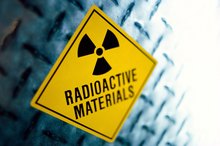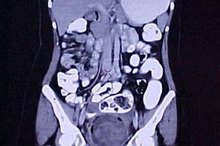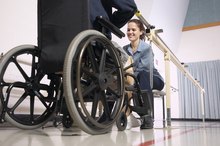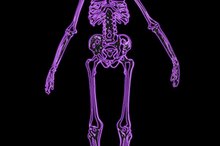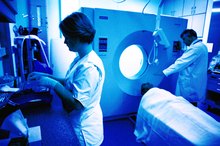Advantages & Disadvantages of CT Scans
A CT (computed tomography) scan is an imaging test that is often recommended by physicians to help diagnose a range of conditions. Patients usually lie down within the scanning device, and the machine passes x-ray beams though the body to produce an image. CT scans can produce a detailed picture of bone, soft tissue, muscles, internal organs and, crucially, tumors or other irregularities. While CT scans are a very widely used type of diagnostic imaging, they also have some drawbacks for patients.
Advantages: Highly detailed
Of all the internal imaging procedures available to physicians, the CT scan is the most detailed, and can give a doctor the most complete picture of what’s happening inside a patient’s body. They are particularly useful and widely used in diagnosing cancer.
Painless
Uses of the Radioactive Iodine 131
Learn More
The CT scan procedure is noninvasive and painless, and is generally quick and convenient for most patients. It’s widely available at a range of different treatment centers.
Precise
Because CT scan gives a doctor a very clear picture of where a tumor or other problem is located and whether it has spread, it can help her in planning a biopsy, surgery, radiation or other treatment with more precision.
Disadvantages: Radiation
Side Effects of MRI With Contrast
Learn More
Compared to other diagnostic tests, CT scans deliver a relatively high dose of radiation to the patient. While this is not usually a problem for a single scan, patients who need to undergo repeated tests can be subjected to a significant level of radiation, increasing their cancer risk.
Allergic Reaction
Patients who undergo a CT scan often receive a dose of what’s known as a “contrast material,” containing iodine. This allows specific areas of the body to be highlighted on the scan. Some people can have an allergic reaction to this, and this is the most common side effect CT scan patients complain of 1. Symptoms can include a metallic taste in the mouth, itchiness, hives and shortness of breath. Contrast materials without iodine are available and are becoming more widely used.
- Patients who undergo a CT scan often receive a dose of what’s known as a “contrast material,” containing iodine.
Misinterpretations
Because a CT scan is so detailed, it can sometimes alert doctors to minor abnormalities in the body that don’t have symptoms related to them and that in the normal course of life would not have caused the patient any problems. However, doctors may feel the obligation to divulge this information to patients, which can cause anxiety and possibly unnecessary follow-up tests or treatments.
Related Articles
References
- National Cancer Institute: Computed Tomography: Questions and Answers
- Brenner DJ. Slowing the increase in the population dose resulting from CT scans. Radiat Res. 2010;174(6):809-15. doi:10.1667/RR1859.1
- Rubin GD. Computed tomography: revolutionizing the practice of medicine for 40 years. Radiology. 2014;273(2 Suppl):S45-74. doi:10.1148/radiol.14141356
- Hu SY, Hsieh MS, Lin MY, et al. Trends of CT utilisation in an emergency department in Taiwan: a 5-year retrospective study. BMJ Open. 2016;6(6):e010973. doi:10.1136/bmjopen-2015-010973
- Dean Deyle G. The role of MRI in musculoskeletal practice: a clinical perspective. J Man Manip Ther. 2011;19(3):152-61. doi:10.1179/2042618611Y.0000000009
- National Cancer Institute. Computed tomography (CT) scans and cancer. Updated August 14, 2019.
- Baysson H, Etard C, Brisse HJ, Bernier MO. Diagnostic radiation exposure in children and cancer risk: current knowledge and perspectives. Arch Pediatr. 2012;19(1):64-73. doi:10.1016/j.arcped.2011.10.023
- Bottinor W, Polkampally P, Jovin I. Adverse reactions to iodinated contrast media. Int J Angiol. 2013;22(3):149-54. doi:10.1055/s-0033-1348885
- American College of Obstetricians and Gynecologists. Guidelines for diagnostic imaging during pregnancy and lactation [ACOG committee opinion number 723]. October 2017.
- Pasternak JJ, Williamson EE. Clinical pharmacology, uses, and adverse reactions of iodinated contrast agents: a primer for the non-radiologist. Mayo Clin Proc. 2012;87(4):390-402. doi:10.1016/j.mayocp.2012.01.012
